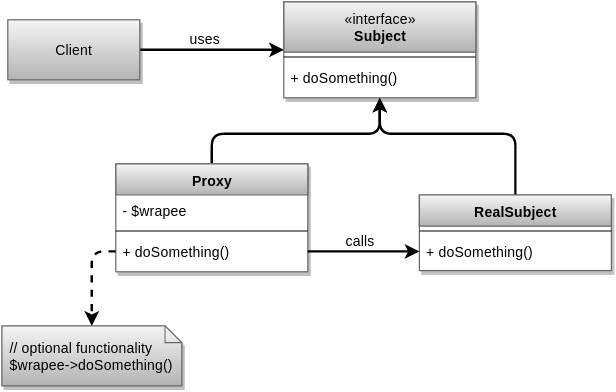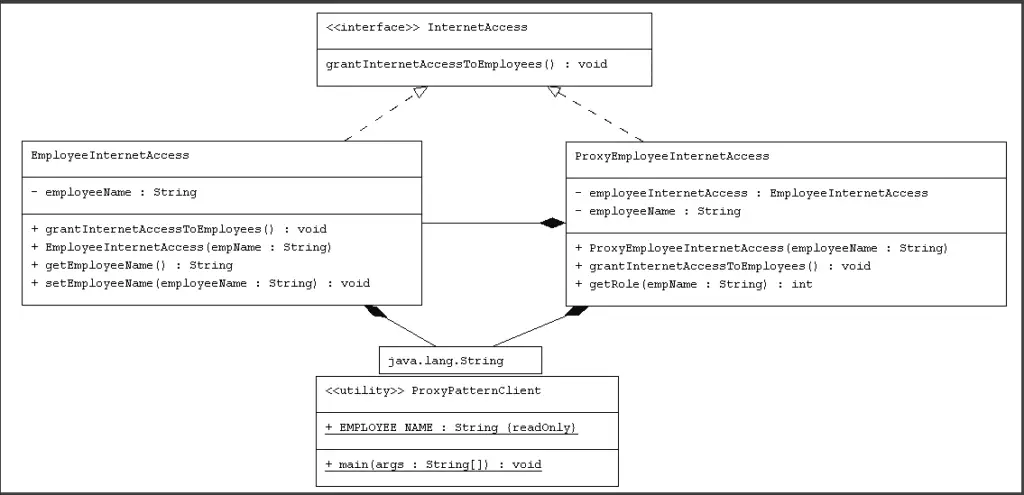Table Of Content

Pranaya Rout has published more than 3,000 articles in his 11-year career. So, instead of going to the bank, he can walk to the nearest ATM with his Debit Card. Then, he inserts his Debit Card and enters the pin and withdrawal amount. The ATM will then communicate with the bank, validate the PIN and Amount, and if everything is fine, the ATM will give the money to Anurag immediately. So, instead of going to the bank, Anurag can withdraw Money from the ATM.
Types of Structural Patterns

A proxy can be used to add an additional security layer around the original object as well. A well-implemented Proxy Pattern can significantly enhance the structure and reliability of large systems. In this case, the weakref.proxy acts as a proxy to the HeavyObject without preserving its lifetime. This allows for memory optimization, especially when dealing with large objects. Previously, we tried to modify and access properties on the target object within the proxy through directly getting or setting the values with bracket notation.
Diagrammatical Representation of the Proxy Method Design Pattern in Java
The objective of a proxy object is to control the creation of and access to the real object it represents. A common use of a proxy is to defer the cost of instantiating of an object (that is expensive to create) until it is actually needed by clients. If we implement the file manager as described above, we're going to be loading images every time they appear in the folder. If the user only wishes to see the name or size of an image, this kind of approach would still load the entire image into memory.
Creational Design Patterns
Next, let’s write the ReportGeneratorImpl class, which is the RealSubject. In this post, we will look at the Proxy pattern the final pattern of the series in the GoF structural pattern family. In this example, we're going to be checking if the pilot's name is "Han Solo" since he is the rightful owner of the ship. JavaScript provides a built-in object called Reflect, which makes it easier for us to manipulate the target object when working with proxies. The proxy can log each request before passing it to the service.
The proxy can keep track of clients that obtained a reference to the service object or its results. From time to time, the proxy may go over the clients and check whether they are still active. If the client list gets empty, the proxy might dismiss the service object and free the underlying system resources.
Compare Linkerd vs. Istio for service mesh technology - TechTarget
Compare Linkerd vs. Istio for service mesh technology.
Posted: Mon, 29 Jul 2019 07:00:00 GMT [source]
It controls access to the real object and may provide additional functionality such as lazy loading, access control, or logging. The Proxy Design Pattern is a structural design pattern that provides a surrogate or placeholder for another object to control access to it. This pattern is useful when you want to add an extra layer of control over access to an object. The proxy acts as an intermediary, controlling access to the real object.
Advantages of the Proxy Method Design Pattern in Java
Patterns from "SOA Design Patterns" by Thomas Erl, Part 2 - InfoQ.com
Patterns from "SOA Design Patterns" by Thomas Erl, Part 2.
Posted: Mon, 21 Sep 2009 07:00:00 GMT [source]
We can also say that the Proxy is the object the client calls to access the real object behind the scene. That means, In the Proxy Design Pattern, a class represents the functionality of another class. This code sets up an image proxy, and when you request to display the image, the proxy checks whether the real image needs to be loaded.
It maintains a reference (realSubject) to the substituted object (RealSubject) so that it can forward requests to it(realSubject.operation()). The proxy class implements the same interface as the original downloader and delegates it all the work. However, it keeps track of the downloaded files and returns the cached result when the app requests the same video multiple times. If you need to execute something either before or after the primary logic of the class, the proxy lets you do this without changing that class. Since the proxy implements the same interface as the original class, it can be passed to any client that expects a real service object.

Proxy Design Pattern - Main Class
In the report viewer application, it is not necessary to create the report generator object when the application loads. The MillenniumFalcon class represents a concrete spaceship which can be used by our Pilot. However, there could be some conditions we might like to check before allowing the pilot to fly the spaceship. For example, perhaps we would like to see if the pilot has the appropriate certificate or if they are old enough to fly. Like any other file manager, this one should be able to display images in a folder that a user decides to open.
We might not have explored all the patterns, but I will start to incorporate this section — just skip over the unknown patterns for now and come back later. The proxy can pass the request to the service object only if the client’s credentials match some criteria. To address this issue, we need to implement the Proxy Design Pattern to control the access and loading of images. Consider a scenario where your application needs to load and display images, and you want to optimize the image loading process.
The proxy object has the same interface as a service, which makes it interchangeable with a real object when passed to a client. First, three of them are the concrete image viewers that automatically load images on creation. The last three images don't load any images into memory on creation.
Proxy is used to encapsulate functionalities of another object or system. Consider remote method invocation, for example, which is a way of calling methods on another machine. In Java, this is accomplished via a remote proxy which is essentially an object providing a local representation of another remote object.
We also declared a Role instance variables that we initialized through the constructor. But, we intentionally refrained from instantiating ReportGeneratorImpl in the constructor – we want to create it only when it is required. From Line 11 – Line 14, we implemented the displayReportTemplate() method.
We are going to create an Image interface and concrete classes implementing the Image interface. ProxyImage is a a proxy class to reduce memory footprint of RealImage object loading. Consider a report viewer application that generates and displays sales reports. When the application starts, it displays a UI where users can specify the format and amount of data to display in a report. Users can also specify the type of report to generate, such as a daily sales report, a complex sales forecast report for the next quarter, and on.
Proxy can be used in a variety of circumstances since demanding resources are a common occurrence in programming, especially when dealing with databases and networking. In given example, we have a RealObject which client need to access to do something. But as the access to this object needs to be guarded, framework returns the reference to RealObjectProxy.

No comments:
Post a Comment